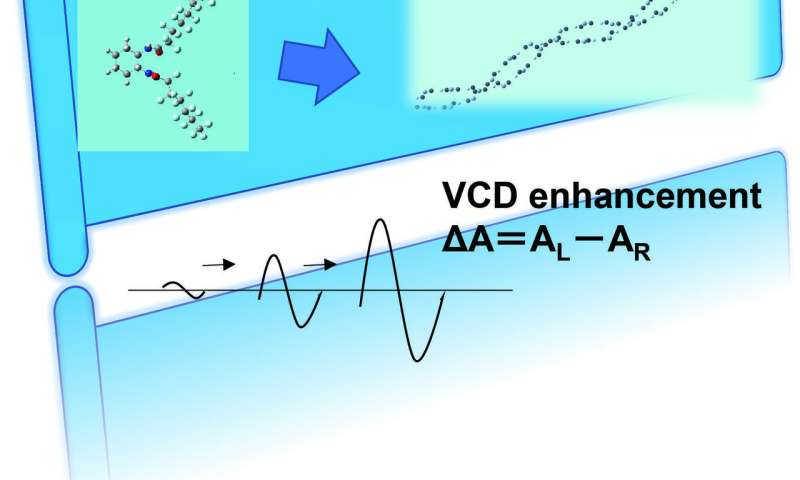A new horizon for vibrational circular dichroism spectroscopy
by Science X staff
Vibrational circular dichroism (VCD) spectroscopy is an extension of circular dichroism spectroscopy into the infrared and near-infrared regions where vibrational transitions occur in the ground electronic state of a molecule. The method offers the advantage of studying the chiroptical properties of a wide range of molecules in non-crystalline states.
However, due to the weakness of the signals, one measurement requires several hours to yield reliable results. Accordingly, its target was limited to a stable molecule in a solution. To overcome this difficulty, our group applied the VCD method to supramolecular systems. In this article, we report a new horizon for VCD spectroscopy. Solid state and time-step VCD methods were developed in determining the mechanism of chirality amplification from the microscopic to supramolecular scales.
The VCD signals were enhanced in the following three cases: (i) chiral gels with hundreds of molecules arranged in stereoregularity, (ii) chiral metal complexes with low-lying excited states in the IR region, and (iii) a molecular pair interacting stereoselectively on a solid surface. Finally, we describe an on-going project involving the construction of a multi-dimensional VCD system.
More information: Sina Wrede et al. Towards sustainable and efficient p-type metal oxide semiconductor materials in dye-sensitised photocathodes for solar energy conversion, Physical Chemistry Chemical Physics (2020). DOI: 10.1039/D0CP01363C
Journal information: Physical Chemistry Chemical Physics
Provided by Ehime University